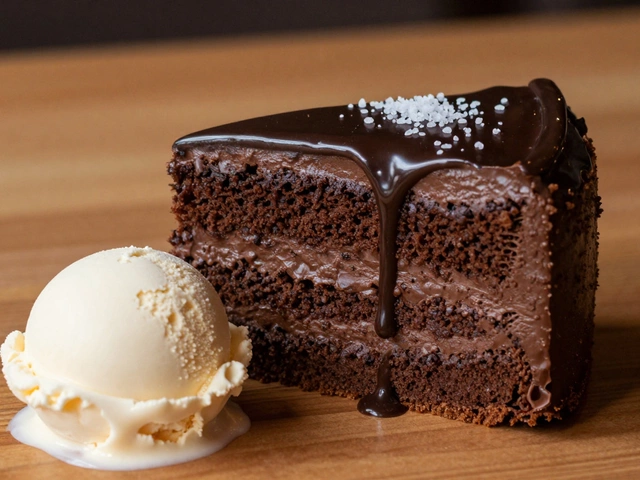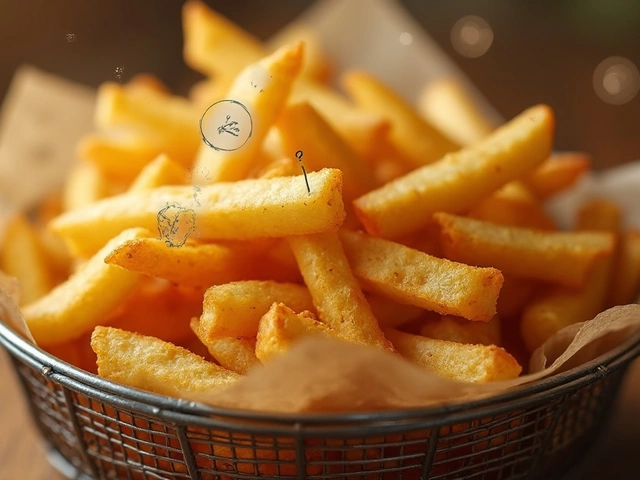Parmesan Made Easy: How to Store, Use, and Cook with This Classic Cheese
Parmesan is the secret weapon in many kitchens. It adds a salty kick, a nutty depth, and a melt‑in‑your‑mouth texture that can turn a bland dish into a winner. But most people don’t know the best ways to keep it fresh or the smartest ways to use it beyond sprinkling on pasta. Let’s fix that right now.
First off, Parmesan isn’t a one‑size‑fits‑all cheese. It comes in big wedges, small blocks, or pre‑grated bags. Each format needs slightly different care, but the goal is the same: keep it dry, cool, and away from strong odors. When you treat it right, it’ll stay flavorful for months.
How to Store Parmesan for Maximum Freshness
Got a big wedge? Wrap it tightly in parchment paper first, then a loose layer of aluminum foil. The parchment lets the cheese breathe while the foil blocks moisture. Store the wrapped wedge in the cheese drawer of your fridge, where temperature stays steady.
If you prefer a block, the same method works. Just make sure the paper doesn’t stick to the cheese; a little oil on the paper can help. For pre‑grated Parmesan, keep the original sealed bag and place it in the coldest part of the fridge. If you’ve opened it, squeeze out as much air as possible before resealing.Don’t forget to label the package with the date you opened it. Most Parmesan lasts about six weeks, but you’ll notice a loss of aroma long before it goes bad. When the scent fades, it’s time to replace it.
Pro tip: if you have a lot of Parmesan and want to keep it longer, freeze it. Freeze in small portions—say, a quarter‑cup each—inside airtight bags. When you need it, grate straight from the frozen block. The texture changes a bit, but the flavor stays strong.
Creative Ways to Cook with Parmesan
Now that your cheese is ready, let’s talk about how to use it. The classic uses—pasta, risotto, and salads—are great, but you can go further. Try mixing a tablespoon of grated Parmesan into scrambled eggs. It adds a buttery richness without extra butter.
Another easy upgrade is to make a Parmesan crust for fish or chicken. Mix equal parts grated Parmesan, panko breadcrumbs, and a pinch of paprika. Pat the mixture onto the meat and bake at 400°F for 15‑20 minutes. You’ll get a crunchy, cheesy shell that stays crispy.
If you love veggies, toss roasted broccoli or cauliflower with a drizzle of olive oil, a sprinkle of salt, and a generous handful of Parmesan. Roast for 10 minutes longer than usual, and you’ll end up with caramelized edges and a cheesy kiss.
For a quick snack, melt a thin layer of Parmesan on a slice of baguette, broil for a minute, and you’ve got a mini cheese toast that’s perfect with a glass of wine.
Finally, don’t overlook Parmesan in soups. Stir a tablespoon into a simmering broth right before serving. It adds body and a subtle depth you won’t get from stock alone.
Bottom line: treat Parmesan right, store it smart, and experiment with it often. You’ll discover new flavors and textures that make every meal a bit more special. Happy cooking!"

Discovering the True Italian Cheese: Names, Varieties, and Taste Secrets
Unravel the world of Italian cheese. Learn about famous cheese names, how they differ, and tasty tips for using them in your kitchen.
View More




